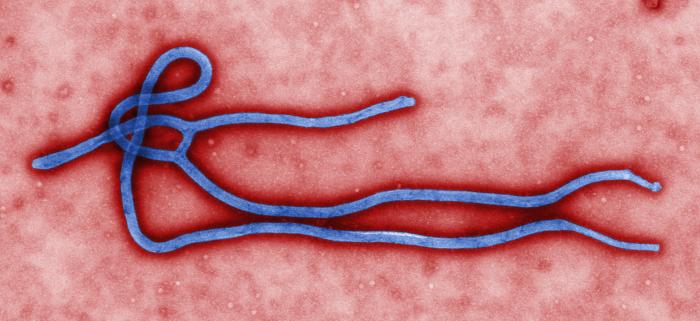First Ebola Patient in New York City
Friday, October 24th, 2014October 24, 2014
Yesterday, an emergency-room physician who returned to the United States earlier this month after caring for Ebola patients in Africa became the first person to test positive for the disease in New York City. Craig Spencer was immediately placed in quarantine at the city’s Bellevue Hospital, one of eight hospitals in New York certified as “Ebola ready” by state health officials. Spencer had been volunteering with Doctors Without Borders in Guinea, one of the African countries hardest hit by the Ebola outbreak. He is the fourth person diagnosed with Ebola hemorrhagic fever in the United States, and the first outside Texas. Only one of these patients—Thomas Eric Duncan, a Liberian man diagnosed with Ebola in Dallas on September 30—has died.
The Ebola virus causes an illness characterized by fever, headache, diarrhea, vomiting, and external and internal bleeding. About 80 to 90 percent of all people who become infected die. The current outbreak, largely concentrated in the West African countries of Guinea, Liberia, and Sierra Leone, has resulted in the deaths of at least 5,000 people. Ebola is spread by direct contact with such bodily fluids as saliva and blood and unsterilized needles or other equipment. Unlike the flu, Ebola fever does not spread through the air.

Ebola Virus Disease Distribution Map—the Ebola virus responsible for the 2014 outbreak was Zaire ebolavirus. (Center for Disease Control and Protection)
New York City Health Commissioner Mary Bassett said that Spencer, who had no symptoms during his journey from Africa, had begun to feel sluggish on Tuesday. On Thursday morning, he called health officials to report that he was suffering from a fever of 100.3 F. degrees (38 C. degrees). Between those times, he had ridden in a taxi and on at least three New York City subway lines and had gone to a bowling alley in the Williamsburg neighborhood of Brooklyn. Bassett said the bowling alley had been closed “out of an abundance of caution.”

A colorized image of the Ebola virus made using a transmission electron microscope. (Cynthia Goldsmith)
Health officials also said only three people had been in close contact with Spencer during that time and all of them had been placed under quarantine. A team of epidemiologists (epidemic disease “detectives”) from the Centers for Disease Control and Prevention was also searching for others who may have had contact with Spencer. However, health officials stressed that other New Yorkers have only an extremely slim chance of contracting the disease. “Ebola is an extremely hard disease to contract,” New York City Mayor Bill de Blasio stressed at a news conference on Thursday evening. “Being on the same subway car or living near a person with Ebola does not in itself put someone at risk. There is no reason for New Yorkers to be alarmed.”
Additional World Book article:
- Disease Detectives (a special report)
- The Origin of New Diseases (a special report)


